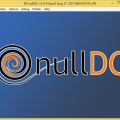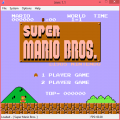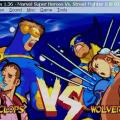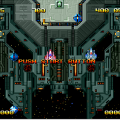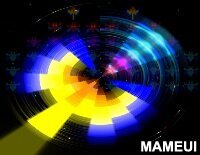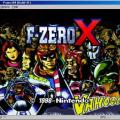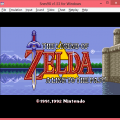- Added the ability to switch FDS disks for multi-disk games
- xBR filter options
- Support for more archive formats through libarchive
- Differentiated Soft/Hard Reset
- Removed internal zip and 7zip decoders in favour of libarchive
- Replaced gtk_key_snooper with key_press_event and key_release_event
- 7zip CRC check segfault
- xBR filter options
- Redundant TV Aspect checkbox removed from NTSC filter dialog
- Modified default sound settings to avoid desync
- blargg's NTSC filter core option
- L/R now insert coins on Vs. System games
- xBR filter added - Hyllian, notBald
- Triangle volume bug in Dendy mode - emu-russia
- NTSC filter background colour fix - blargg
- 0 replies
- 4,576 views
- Add Reply
- Famicom
- Super Famicom
- Game Boy
- Game Boy Color
- Game Boy Advance
- Nintendo DS
- Super Game Boy
- BS-X Satellaview
- Sufami Turbo
- 0 replies
- 3,244 views
- Add Reply
- The program is 100% assembler code. Accuracy should be quite high (if not: bug are reports welcome).
- Controllers: 1-2 Joypads, Multitap, Mouse, Lightguns (via mouse), NTT Data Pad, X-Band Keyboard, Twin Tap's, Barcode Battler, Pachinko Dial, Exertainment Bike
- Coprocessors: SA-1, GSU, DSP, ST010/11, CX4, OBC1, S-DD1, SPC7110, S-RTC, RTC-4513, SFC-Box, NSS arcade cabinet
- Add-ons: Satellaview, Turbofile (TFII and STF)
- Debugger: Assembler, Disassembler, Xboo-Upload Function (for testing code on real SNES).
- Requirements: Win95 and up, around 8MB RAM, around 200MHz (tested) (on 1GHz computers, most games can run 5-10 times faster as on real hardware).
- Interlace Mode (vertical hires) isn't yet supported (used only by 3 games or so)
- Offset-Per-Tile Mode isn't yet supported (used by Starfox... and probably by some further games...?)
- GUIs of Copiers and Cheat Devices should be working (but without actually emulating FDDs or Patches)
- ST018 isn't yet supported
- Actraiser 2 hangs in intro (unknown why)
- help: added note on starting multiple hdma's midframe in different scanlines
- bugfix: mirror SRAM from 700000h to F00000h, but NOT to F08000h (thanks byuu)
- midframe hdma: init "snes_hdma_not_pause_flgs" during vblank (super ghouls)
- help: cleaned up memory/dma chapters, added basic LoROM/HiROM mapping chapters
- emu: added support for rare LoROM games with more than 32K SRAM (eg. Dezaemon)
- help: added cx4 pinouts (thanks qwertymodo) and cx4 memory map (thanks byuu)
- commandline: looks in current directory before 'slot' directory (for lidnariq)
- video/zoom: fullscreen option (toggle via context menu; by right mouse button)
- video/zoom: software: supports odd ratios, mmx-based horizontal blur/resample
- video/zoom: opengl: SwapBuffers, SubImage2d, DblBuffer, PixFmtScoring, Speedup
- gui: created own help engine (instead of microcrap's suicidal windows .hlp)
- game window: displays current zoom factor in caption (during sizing)
- game window: optionally square pixels, or real PAL/NTSC pixel aspect ratios
- game window: allows free sizing (with snapping near N*100% zoom factors)
- sfcbox: removed dummy OSD font (real SFC-Box character set is dumped now)
- controls: divides snes-mouse resolution by game-window-zoom-factor
- icon: simplified snes button/logo icon, at 12x12,16x16,32x32,48x48 pix sizes
- help/emu: sfcbox: added io-port-mirrors and values for unknown/unused io-bits
- help/emu: sfcbox: osd character zoom, osd background/outline styles
- help/emu: sfcbox: cpu hd64180 traps (most) invalid hd64180 opcodes
- help/emu: gsu mirrors/openbus, gsu multiply speed, r15+irq on stop opcode
- a22i: added argonaut gsu assembler (via .argonaut and .native/.nocash syntax)
- emu: avoids break on nested event-handling within hdma (for buggy kof2000)
- cartloader: clips corrupt sram/xram/flash header values to reasonable sizes
- cartloader: fixed crash upon missing cx4 bios (thanks epguy35 for bugreport)
- help: added GSU-1 and GSU-2 pinouts (based on GSU schematics drawn by magno)
- help: added pinouts for SA-1 chip, BSX-FLASH connector, partial BSX-EXT port
- help: added MAD-R logic table+more MAD-1 details (thanks SkinnyV for dumping)
- help/emu: added some new nss details (vsync, mirrored/unused bits)
- help: added some new xband keyboard details (thanks to Benjamin Eriksson)
- help/emu: added copy-protected bootlegs (bitswap, constant, and alu/flipflop)
- help/emu: added super20hab (korean multicart with 20 small nes-port games)
- 4 replies
- 2,514 views
- Add Reply
- 6 replies
- 5,930 views
- Add Reply
Nestopia UE 1.45
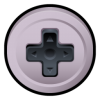
Description:
Nestopia is an emulator for the Nintendo Entertainment System/Famicom (and Famicom Disk System). It is a computer program that acts like a physical piece of hardware. In other words, this is a method of preserving videogame history, with the welcome side effect of allowing you to play NES games on a modern computer.
Change log:
higan x64 092.10

Description:
higan is a Nintendo multi-system emulator that began development on 2004-10-14. It currently supports the following systems:
higan also supports the following subsystems:
Change log:
no$sns v1.5

Description:
no$sns © Martin Korth
nocash SNES/SFC emulator/debugger for windows
Features
Known Problems
Change log:
download: no$sns v1.5
Opinion: Oculus Ridiculous, My Take on the Oculus Rift

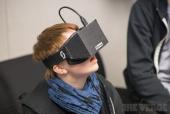

I spent the great deal of my early morning reading about the Oculus Rift and how it might change computer gaming. Apparently, it's the new Virtual Reality Headset of the 21st century, and with the power of today's Hi Definition graphics, it will revolutionize your gaming experience forever.
The funny thing is -- Nintendo tried this and it failed with the Virtual Boy. And by the way, they already have a Virtual Boy emulator now for Oculus Rift development kits. But, perhaps it was a fluke? Just poorly designed hardware for a damn good concept? At the moment, Sony and Microsoft seem to believe this, as we might see VR headsets in the near future with the XBOX ONE and PS4.
Regardless, the Oculus Rift is about PC gaming, and the cool thing is that it's open source. But, the majority of people are going to buy it to play the newest games, and currently the only game that fully supports it is Team Fortress 2.
But, where it gets interesting is that according to the latest August 2013 issue of Custom PC (UK Magazine), you will need a hefty graphics card to run a game with Oculus Rift. Your GPU will have to be able to run the newest games at least at 60FPS with V-Sync and Stereoscopic 3D enabled.
How many GPU's support just 60FPS of the major games currently out (i.e. Crysis 3)? According to Custom PC's recent benchmarks (with zero note of having VSync or Stereoscopic 3D enabled for the tests), that would be the nVidia GTX Titan 6GB, which can run Crysis 3 at a steady ~61FPS on a 1080P HD Resolution (1920x1080). Of course, that's if you can buy an Oculus Rift right now, and start playing, which you'd be stuck with a development kit (nothing wrong with that, but it's buying a beta product).
Finally, don't forget, your GPU will have the game set to a 1080P resolution, but currently Oculus Rift only supports a viewable 1280x800 resolution, or each eye at 640x800. Maybe they'll up this in the final consumer version, but there isn't even a release date set.
Anyway, let's say you did want to play with Oculus Rift right now at its full potential... how much would it cost?
Oculus Rift Development Kit = $300
nVidia GTX Titan 6GB = $1,019.99 (newegg Price)
Total (not included the CPU you will need) = ~$1,319.99
Projected release date for Oculus Rift? Maybe... 2014.
The moral of the story here is you're going to need a damn good computer if you want to use Oculus Rift at the best of its capabilities for PC gaming. The only way this might change is if the requirements to use Oculus Rift will change by its consumer release, or if you use it for 3D porn, with penis sensor capabilities (I'm not joking). [ADDED: It's also very bothering with the reports of numerous people feeling nauseous / motion sickness [1, 2, 3] after limited (5-10 minutes) to extended usage of the Oculus Rift. The good news is Oculus VR (company behind Oculus Rift) has taken extensive note of this and has called upon game developers to try to work on adjusting their games accordingly to limit this, but even they admit it may be impossible to completely eradicate it.]
Until then, I'm calling this the Oculus Ridiculous.

